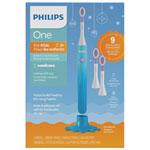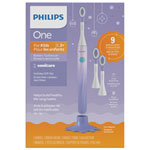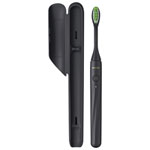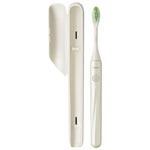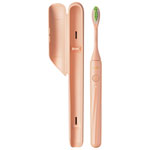Electric Toothbrushes: Plaque’s Worst Nightmare
Most people don’t brush their teeth the right way when they use a manual toothbrush, which can lead to a build-up of plaque and poor dental health. An electric toothbrush helps by delivering more brush strokes per minute at a steady, consistent pressure.
Electric Toothbrushes vs. Manual Toothbrushes: Which Is Better?
Great dental health begins and ends with plaque control. Plaque can quickly lead to tartar, tooth decay, gingivitis, and other oral health issues. Electric toothbrushes use a combination of rotating and oscillating heads to attack plaque buildup from all angles.
Several types of electric toothbrushes are also designed to gently remove surface stains as well as plaque, so you can maintain a bright, healthy-looking smile with regular use. These toothbrushes typically feature a special rubber cup in the middle of the bristles to gently polish teeth as you brush.
What’s the Difference Between Oscillating and Sonic Electric Toothbrushes?
Oscillating electric toothbrushes feature bristles arranged in a circle on a brush head that oscillates back and forth. Some models add vibration and pulsation to the brush head movement. On average, oscillating toothbrushes offer between 2000 and 8000 brushes per minute, as opposed to 300 brushes per minute when using a manual toothbrush.
Sonic toothbrushes also feature bristles arranged in a circle on a brush head that oscillates back and forth, but much faster than oscillating toothbrushes. They typically offer upwards of 30,000 brushes per minute. Sonic toothbrushes move so quickly, in fact, that the vibrations they create in the mouth disrupt bacteria on the teeth and gums even where the bristles don’t reach directly.
How Often Do You Need to Change the Brush Head on an Electric Toothbrush?
While each specific model and brand may differ in their recommendation, most dentists suggest you change the brush head on your electric toothbrush every 3 to 4 months. Bristles fray and lose their effectiveness over time, so it’s imperative to change the brush head when they begin to show signs of wear. It’s also a good idea to change the brush head after you’ve recovered from illness.
Can Kids Use Electric Toothbrushes?
Definitely. In fact, if your child is reluctant or fussy when it comes to brushing their teeth an electric toothbrush can make the experience a little more fun and interesting. Electric toothbrushes for kids offer the very same oral health benefits as adults. Whether you’re brushing your toddler’s teeth yourself, or encouraging your child to brush their own teeth more diligently, an electric toothbrush can help ensure a more thorough clean and better oral health from a young age.
Features to Look for When Choosing an Electric Toothbrush
When it comes to choosing an electric toothbrush, there’s a handful of advanced features that go beyond simple convenience. Look for the following features to keep your toothbrush (and by extension your teeth) in tip-top shape.
Timer
Some brushes come with a timer to ensure you are brushing your teeth for the right amount of time (usually 2-3 minutes), so you’ll know exactly how long to brush for. More advanced models indicate how long you should spend brushing each individual section of your mouth for the best possible clean.
Pressure sensors
Brushing too hard can be damaging to your teeth and gums, which is why some electric toothbrushes come equipped with built-in pressure sensors. Start brushing too hard, and the toothbrush will let you know.
Indicator bristles
Remembering to change the brush head on an electric toothbrush can be quite the hassle. That’s why some electric toothbrushes have specially designed coloured bristles that will fade when it’s time to change the brush head.
Rechargeable base
Most electric toothbrushes offer fairly long battery life, but they don’t all feature built-in batteries or rechargeable bases. Some use standard AA or AAA batteries. A rechargeable base is the simplest and most effective way to keep your toothbrush fully powered at all times.

